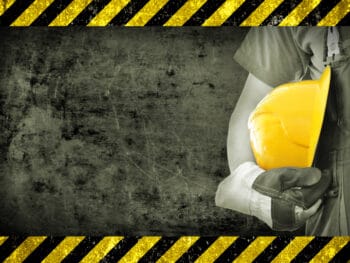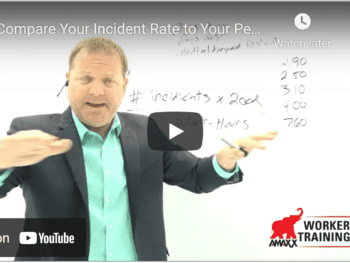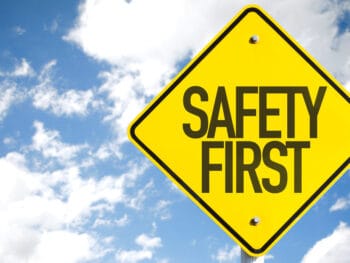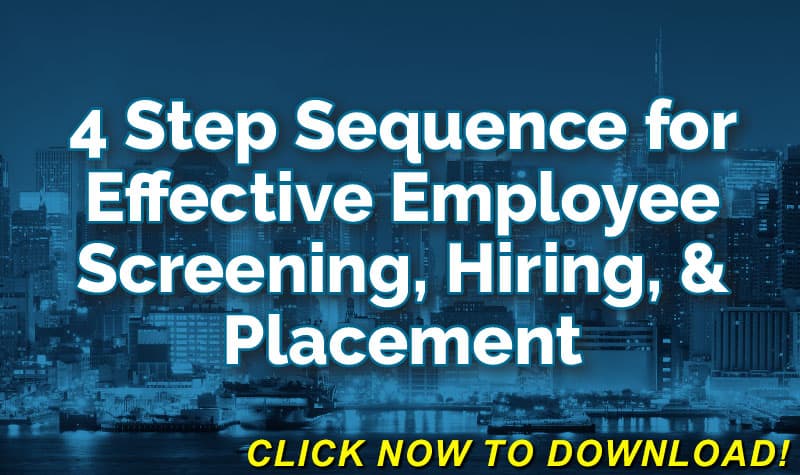When I get introduced to a new account or employer one of the first questions I get asked is my opinion on their level of risk. Most employers just want a feel of where they fall in the ranks. Is their type of work riskier than others in the same employment category? How are they matching up against other employers that do similar types of work? Is their safety program above-average, or is it lacking in certain areas?
I am always glad when I get asked these questions, because it shows that the account has interest in their comp program. More importantly they want to know how to do things better, and how they can better perform in reducing injuries to begin with.
Every employer is different. There are different sizes, different techniques, different people, different protocol for safety, and so on. The biggest variable is the overall safety culture at each employer. Do they have a well-running prevention program? How are employees involved in the safety program, if at all? Are there safety incentives or a team culture towards safety?
But is not just the safety culture I am looking at. What I am interested in right off the bat is what the employees are doing day after day in their jobs. Going beyond just saying that “lifting” is a risky job, I try to explain limiting risk in the following categories:
Lifting while bending and/or twisting
Most injuries to the spine are from more than just lifting. The worst strains or injuries happen from lifting while bending, lifting while twisting, or a combination of those movements. These are the recipe for herniating a disc, and those are one of the most costly injuries out there. Herniated discs can result in nerve impingement issues that produce pain, numbness, and weakness of the extremities, and the cure for these issues typically involves a surgical procedure with unguaranteed results. If the employer can limit or eliminate the risk of lifting while bending/twisting, they are reducing the risk of an employee blowing a disc out and requiring surgical repair.
Throwing materials or overhead work
Neck and shoulder injuries are no less dangerous or less costly in nature. Workers that have to perform repetitive throwing or pushing/pulling of heavy products are at risk for cervical disc herniation, and maybe worse–massive rotator cuff tears. Workers that perform a lot of their job duties overhead are also in a high-risk classification. If this type of work has to be done, proper body mechanics is a must. Also important to reduce risk is initiating job rotation where a group of employees move between various tasks throughout the day. This way they are not spending all of their day working above their heads day after day.
Slip/Fall
One of the first things I look at when I tour a plant is the floor and the general housekeeping of the facility. Are the floors clean and dry? Is there a non-slip agent on the floor? What types of footwear have to be worn? Is the floor well marked and painted? Are hoses and machines kept within a certain area or are there hoses that run across the floor where people are walking? Are there any liquid spills or oil spills on the floor? If so are they roped off and cleaned up right away? One of the best people to answer these questions is the employee right on the floor. I try to grab a few employees and ask them these questions, in an attempt to get the truth on how housekeeping is completed. A lot of the time the risk manager or the Human Resources person will tell you what you want to hear, but the workers will have a different story as to what actually happens. Slip/Fall injuries can result in a number of issues, from knee strains and meniscus tears, to ankle fractures, to head injuries. Any chance you have to improve the overall housekeeping in a shop the more you reduce the risk of a slip/fall injury.
Repetitive movements
Carpal tunnel syndrome is always the first culprit when it comes to repetitive movement issues, but there are many more injuries that fall into this category. These include joint strains, epicondylitis, tendinitis, and so on. It is not just the hand-intensive repetitive movements I am interested in, but it is more the repetitive movements at every job station. A lot of employers use production numbers as the basis for workflow, and these demands can increase/decrease based on their product demand. If you are seeing a lot of repetitive movement claims coming in, there is an issue at hand that needs to be addressed. One of the best ways to reduce risk in this category is by rotating employees in and out of repetitive job scenarios. This will give them a break throughout the day, so they are not just doing the same repetitive job hour after hour, day after day, until an injury occurs. Also important is warming up before starting work, with stretches and easy exercises to get the body ready for work demands. Ergonomics and proper body mechanics are also a must.
Each major risk category will change from employer to employer based on whatever their job demands are from day to day, but I look at these to start.
Author Michael B. Stack, CPA, Principal, Amaxx Risk Solutions, Inc. is an expert in employer communication systems and part of the Amaxx team helping companies reduce their workers compensation costs by 20% to 50%. He is a writer, speaker, and website publisher. www.reduceyourworkerscomp.com. Contact: mstack@reduceyourworkerscomp.com.
©2014 Amaxx Risk Solutions, Inc. All rights reserved under International Copyright Law.
WORK COMP CALCULATOR: http://www.LowerWC.com/calculator.php
MODIFIED DUTY CALCULATOR: http://www.LowerWC.com/transitional-duty-cost-calculator.php
WC GROUP: http://www.linkedin.com/groups?homeNewMember=&gid=1922050/
SUBSCRIBE: Workers Comp Resource Center Newsletter
Do not use this information without independent verification. All state laws vary. You should consult with your insurance broker, attorney, or qualified professional.















